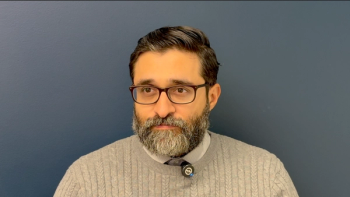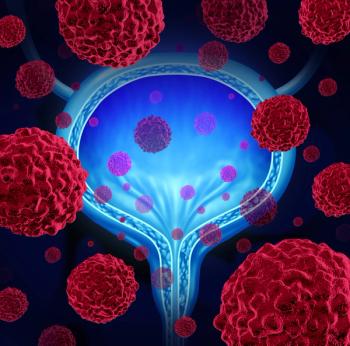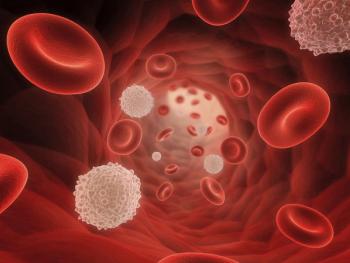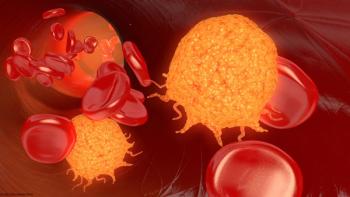
Frontline LDRT Plus Atezolizumab Combo Shows Efficacy in ES-SCLC
The confirmed objective response rate among 56 patients with extensive-stage small cell lung cancer was 87.5%, all of whom experienced partial responses.
The addition of low-dose radiotherapy (LDRT) to frontline atezolizumab (Tecentriq) plus chemotherapy was found to be well tolerated and effective as a treatment for patients with extensive-stage small cell lung cancer (ES-SCLC), according to results from the phase 2 Match trial (NCT04622228) published in the International Journal of Radiation Oncology, Biology, Physics.
Efficacy data revealed that among 56 patients treated in the study, the primary end point was met; the confirmed objective response rate (ORR) was 87.5% (95% CI, 75.9%-94.8%), all of whom experienced partial responses. A total of 3 patients had stable disease, and 4 experienced disease progression for a disease control rate (DCR) of 94.6% (95% CI, 85.1%-98.9%). The median duration of response (DOR) was 6.9 months (95% CI, 4.7-8.4).
Survival data showed that 76.8% of patients experienced disease progression or had died by the data cutoff date of June 30, 2024, and the median progression-free survival (PFS) was 6.9 months (95% CI, 5.4-9.3). Additionally, the 12-, 24-, and 36-month PFS rates were 27.3% (95% CI, 16.4%-39.4%), 23.7% (95% CI, 13.5%-35.5%), and 20.7% (95% CI, 10.9%-32.8%), respectively. Furthermore, 64.3% of patients had died as of data cutoff, with a median overall survival (OS) of 16.9 months (95% CI, 14.0-32.9). The respective 12-, 24-, and 36-month OS rates were 69.6% (95% CI, 55.8%-79.9%), 46.1% (95% CI, 32.7%-58.5%), and 35.1% (95% CI, 22.3%-48.2%).
“This study indicated that the addition of LDRT might improve the ORR and 3-year OS rate, with good tolerability, in patients with ES-SCLC treated with [immune checkpoint inhibition] plus chemotherapy, suggesting that this may be a feasible and practical clinical treatment for ES-SCLC,” primary investigator Lin Zhou, MD, from the Division of Thoracic Tumor Multimodality Treatment in the Cancer Center and State Key Laboratory of Biotherapy and from the Department of Radiation Oncology in the Cancer Center of West China Hospital at Sichuan University in Chengdu, wrote in the publication with study coinvestigators. “Further studies, including randomized controlled trials, are needed to validate the use of [adaptive immunoradiotherapy] for ES-SCLC.”
Patients 18 years or older with treatment-naive, histologically or cytologically confirmed ES-SCLC per RECIST v1.1 criteria and an ECOG performance status score of 0 or 1 were treated with LDRT, atezolizumab, and chemotherapy.
During the induction phase, patients received 75 mg/m2 of intravenous cisplatin or carboplatin at area under the curve 5 mg/mL per minute on day 1 of four 21-day cycles. During this phase, patients also received 100 mg/m2 of intravenous etoposide on days 1 to 3 of each cycle as well as 1200 mg of intravenous atezolizumab on day 1 of each cycle with concurrent LDRT.
Following induction, patients received maintenance atezolizumab until loss of clinical benefit, unacceptable toxicity, withdrawal of consent, or death. Patients who had progression in the absence of unacceptable toxicity were permitted to receive atezolizumab in combination with other therapies at investigator determination of potential clinical benefit. Additionally, prophylactic cranial irradiation was administered at 2.5 Gy in 10 fractions for a total of 25 Gy.
The primary end point of the study was ORR. Secondary end points included investigator-assessed DOR, DCR, PFS, OS, and safety.
All patients experienced at least 1 adverse effect (AE), with 91.1% of patients experiencing grade 3 or higher AEs. Grade 3 to 5 AEs occurring in at least 20% of patients included neutrophil count decreases (60.7%) and white blood cell count decreases (58.9%) as well as platelet count decreases, anemia, and neutropenia (21.4% each).
Further safety data revealed that AEs leading to treatment interruption occurred in 48.2% of patients. Furthermore, 10.7% of patients experienced AEs leading to dose discontinuation.
Reference
Zhou L, Sun J, Xie C, et al. Low-dose radiotherapy concurrent with atezolizumab and chemotherapy as first-line treatment for extensive-stage small-cell lung cancer: three-year follow-up of a multicenter, single-arm, phase 2 trial (MATCH). Int J Radiat Oncol Biol Phys. Published online July 1, 2025. doi:10.1016/j.ijrobp.2025.06.3872
Newsletter
Stay up to date on recent advances in the multidisciplinary approach to cancer.

















































































